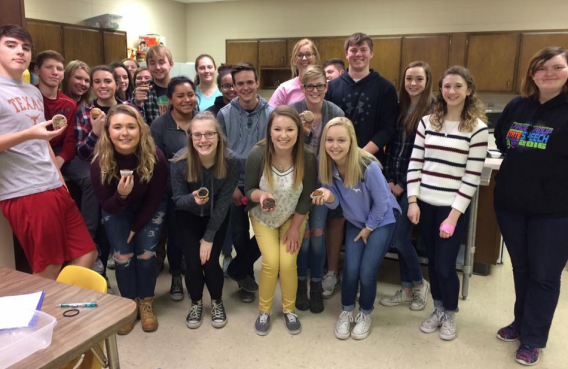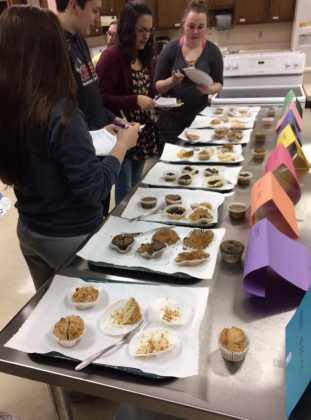Share This
When the Healthy Hunger-Free Kids Act shifted the landscape for what types of foods were allowed to be sold at schools, students in Iowa’s Roland Story Community School District did not sit around and complain. Rather, they put on their aprons and got to work.
In Katie Brouwer’s high school bakery class (part of the Family and Consumer Sciences department), the capstone project was to develop muffin recipes that met the regulations of the Healthy Hunger-Free Kids Act. These guidelines require making at least 50% of the grains whole, along with limits for fat, sodium, and sugar. Before they even got to the kitchen, students researched substitutions and analyzed nutritional content. Once they found a combination of ingredients that met the guidelines, they baked up their prototypes and evaluated the taste, texture, and appearance of their muffins, going back to the drawing board as needed. After the final muffins were put to the test with a school-wide taste test, “Pumpkin Spice” was declared the winner.
BONUS RECIPE: Award-winning Pumpkin Spice Muffins from Roland-Story High School
What makes this exercise stand out from typical experiences in Family and Consumer Sciences classrooms was the student-driven approach. “Students chose their ingredients and developed the recipe; students chose when they needed to bake versus work on the written report; students chose what was their top priority in their final product— appearance or taste,” explained Ms. Brouwer. “As a Family and Consumer Sciences teacher, I often put in considerable thought when choosing recipes and planning labs. This project put that thought and planning onto the students—and they loved it! My students were the most motivated, eager, and excited I have seen them all year!”
This project, which was awarded the 2017 National Teaching and Learning Award from the Home Baking association, was just one of many exposures to whole grains for these curious Midwestern high schoolers. In another lesson, students created a meatless whole grain pasta dish that met certain protein requirements, making their own sauces from scratch, and choosing their own toppings and pasta shape. Other popular recipes included quinoa pizza bites baked in muffin tins, and oatmeal energy balls made with ground flaxseed.
Such a heavy emphasis on whole grains might seem like a curious point of attraction for teenagers, but students are flocking to the curriculum. Enrollment in Ms. Brouwer’s nutrition-focused baking class more than doubled for the 2017-2018 school year, jumping from approximately 23 to 50 students. The hands-on nature of the course is undoubtedly appealing to a generation increasingly devoid of off-screen experiences. But Ms. Brouwer notes that her pupils also understand the relevancy of this information in their lives. “Students are really becoming advocates of their own education,” observed Ms. Brouwer.
Like many teenagers, the students in Ms. Brouwer’s high school bakery class had been acquainted with whole grains on lunch trays and at fast casual restaurants, but didn’t fully grasp how these choices could be woven into an overall healthy lifestyle until they were immersed in the possibilities. “They see quinoa on the menu at restaurants but didn’t realize that could be a choice for them when they cook at home,” explained Ms. Brouwer.
The culinary instruction is accompanied by valuable nutrition education lessons. Students learn the nuances that distinguish terms like “multigrain” and “whole grain,” helping them develop into more discerning and educated consumers. Perhaps most importantly, students are learning that whole grains deliver not just nutrients, but flavor too. In a taste-test of a chicken flavored pilaf made with wild rice or white rice, the students overwhelmingly favored the wild rice version.
Regardless of how school nutrition regulations evolve in the months and years to come, young people are stepping up to the plate and challenging long-held stereotypes about what they will and will not eat. This week, get out of your comfort zone and try a new whole grain recipe at home. Your taste-testers just might surprise you! (Kelly)



Add a Comment